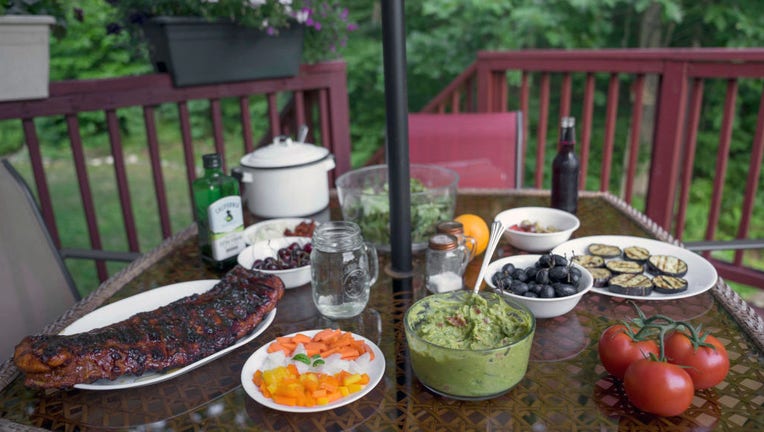How long can food sit out? Your summer picnic guide

A full table spread out for a family at a simple American home. (Photo by: Tyson Paul/Loop Images/Universal Images Group via Getty Images)
With the summer travel season shaping up to be "one for the record books," countless Americans are sure to spend time outdoors this season.
And whether it’s a beach day, a camping trip or a backyard gathering, all will include one common thing – food.
Here are some food safety tips to keep in mind while planning your summer getaway:
How long can food sit out?
The summer heat and humidity is a breeding ground for bacteria.
Never leave food out of refrigeration for over two hours, the U.S. Department of Agriculture warns. And, if the temperature is above 90 °F, put the food away within the hour.
The USDA recommends keeping hot food hot and cold food cold while it is sitting out during your picnic.
Place hot foods in warming trays or slow cookers, and keep cold food on ice.
Bacteria can be reintroduced to food even after it is safely cooked, so properly serving the food and storing it away is just as essential.
"For this reason, leftovers must be put in shallow containers for quick cooling and refrigerated at 40 °F or below within two hours," the USDA says.
RELATED: Summer travel season will be 'one for the record books,' AAA says
How long to grill meat
Unfortunately, there’s no quick or easy answer for this. It’s all about the temperature.
Same as you’d cook food indoors, the meat on your grill needs to reach a minimum internal temperature to be safe for consumption.
One tip: always thaw your meat completely before throwing it on the grill so it cooks more evenly.
Read more grilling and food safety tips here.
How to pack cold food
The USDA has one tip for packing your cooler: keep the drinks and food separate.
"The beverage cooler may be opened frequently, causing the temperature inside the cooler to fluctuate and become unsafe for perishable foods," the USDA points out.
Packing your foods when they are frozen can also help maintain a cold temperature, and fill any extra space with more ice.
A full cooler will keep your foods safe for longer than ones that are only half full.
Another tip: once outside, keep the cooler in the shade.
This story was reported from Detroit.

